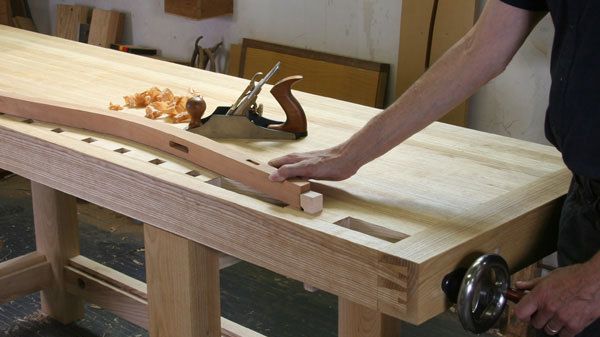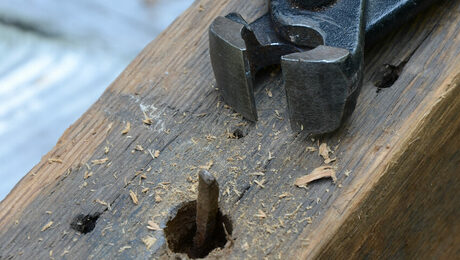Flattening a Benchtop
How to flatten your benchtop with a handplane
I was able to skip a trip to the gym on the day I flattened the top of my new bench. It’s definitely exercise. But if you’re not ready for a workout, bear in mind that you can also outsource the flattening. Just find a shop with a wide-belt sander.
I do the flattening with handplanes, working in three distinct stages. The flatter the top is, the better you’ll like your bench, knowing that you can count on it as a reference surface. You can use winding sticks and straight edges to check your progress, but I don’t find them necessary—the planing itself gives you plenty of indication of where the low and high spots are.
The first stage of flattening is planing directly across the top—perpendicular to the grain. But before you take the first pass, chamfer the long edges of the top so you don’t blow out fibers as you plane across (spelching is the wonderfully descriptive term for that particular problem). If you skew the plane somewhat you will get a cleaner cut than if you hold the plane exactly in line with the direction of cut. Working from one end of the bench to the other, take as many passes as necessary to get a relatively even cut all the way across the top.
 |
For stage two of the flattening, switch to planing at a 45-degree angle.
 |
Cover the top completely from end to end. Then repeat the process, but planing at the opposing 45 degree angle.
 |
Once you have planed the top completely on both diagonals, you’re ready for the last stage of flattening—planing along the grain. I use a much lighter cut for this work.
 |
It’s not absolutely necessary, but I also switch planes for each of these three stages. I do the cross-grain planing with a jack plane, the diagonal planing with a jointer plane, and the final planing along the grain with a smoothing plane.
After I finish planing, I go over the top with a card scraper. But I don’t fuss about getting a furniture-quality surface. This is a workbench, after all, and it will see a lot of hard use. Flatness is key, but a few imperfections are fine. After scraping, I finish the top with a few coats of an oil-varnish blend.
 |
Fine Woodworking Recommended Products

AnchorSeal Log and Lumber End-Grain Sealer

Starrett 12-in. combination square

Hedgehog featherboards























Log in or create an account to post a comment.
Sign up Log in